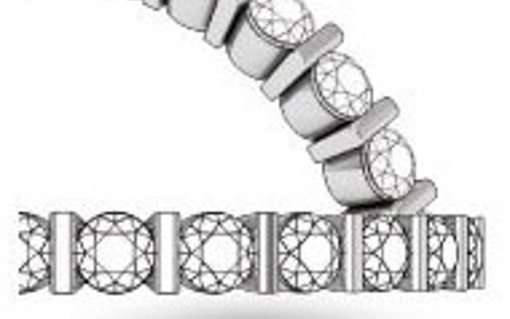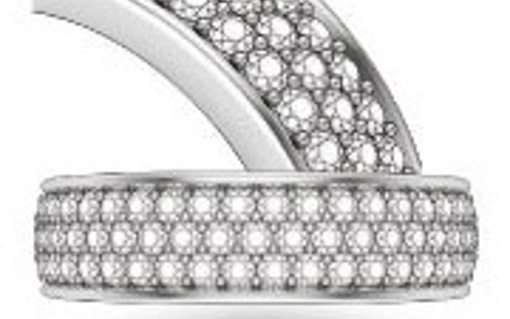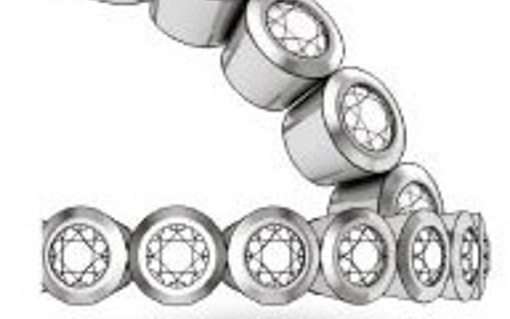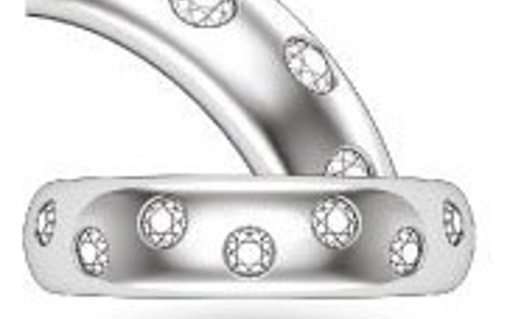Navigation:
→ Wedding and Eternity Rings
→ How we make our rings
→ Wedding Ring profiles
→ Engraving and textures
→ How we make to measure
→ Two-tone and inlays
→ Wedding band and Eternity Ring styles
Wedding and Eternity Rings
Celebrating lifelong lasting commitment with a lifelong lasting ring
Wedding bands
A symbol of eternal love, the wedding ring is a very old tradition. The wedding ring is an emblem of love through time and representation of a lifelong agreement between two parties to love and cherish one another. Wedding rings are circular in shape, it has no beginning and no end this makes it a symbol of infinity. It is endless, eternal; just the way love should be.
For many, the wedding ring is worn on the fourth finger of the left hand. Tradition is believed to have derived from the Romans. The wedding ring is worn on the left-hand ring finger because it is believed there is a vein in the finger, referred to as the ‘Vena Amoris’ or the ‘Vein of Love’ which leads directly to the wearer’s heart.
Eternity Bands
Also known as an infinity ring, an eternity ring is usually compromised with a row of gemstones representing continuous love, given to your partner at a significant event during like relationship (the birth of a child or an important anniversary date). The style of the eternity has many forms but all carry the same sentiment. The most common form of the eternity ring is a row of diamonds set continuously around the finger. There are many ways in which these gemstones can be set in an eternity ring, all dictated by preference and of course the lifestyle of the wearer.
Commitment Rings
As the name suggests, promise rings signify that a promise is being made but the meaning of a promise ring differs from couple to couple. Promise rings are widely used as a symbol of commitment. Many couples use the ring as a way to signify a future engagement, others simply wear the ring as a means of reflecting devotion to one another. Many couples also do not want to brand their love in which they feel is an outdated language.
We have had many couples, from the LGBT+ community and younger age ranges, express a desire to cement their special unity with a commitment ring as opposed to a ‘wedding band’ for personal reasons. We at Durham Rose firmly respect that ‘Love is Love’ and it should be celebrated in a way that truly represents your values and embodies you and your partner’s connection.
→ Return to Top
How We Make Our Rings
Our promise is that the ring you wear, will be for you and only you.
We at Durham Rose, personally guarantee that the design of your ring will never be repeated. We ensure the uniqueness of your bespoke engagement ring or wedding ring due to bespoke manufacturing process that we use in order to create them.
Lost Wax Casting
Once you have agreed on the final design, a skilled technician will use state-of-the-art engineering software to generate a wireframe model of the ring. From this, a 3D printer is then used to create a wax mould ready for the ‘lost wax’ casting process. The technician will then pour your chosen precious metal into the wax mould which will be destroyed in order to extract your ring. This ensures that your specific cast will never be used again, guaranteeing your ring’s true uniqueness.
Once the raw casting has been made it will be polished by hand in preparation for the trained gem-setter to mount your selected gemstone(s). The finished ring is given a final polish and is then quality assessed by a trained Goldsmith to ensure that the ring has been made to the highest possible standard. Once approved, the ring is sent to be hallmarked.
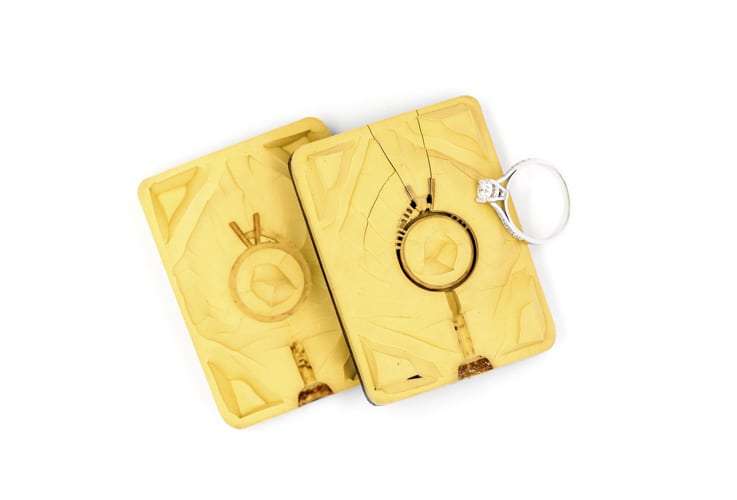
Lathe Made Wedding Rings
The production of the wedding band is a well-evolved process which has been innovated over time. The traditional system has been simplified by the use of modern technology. This has made the process a more efficient way of creating simple and classically shaped wedding bands. Starting from a tube made from a continuous casting machine it is possible to achieve the perfect diameter, width and quality for your wedding band.
This is a great process which creates rings quickly and efficiently whilst reducing the amount of waste and the amount of metal required from more traditional systems.
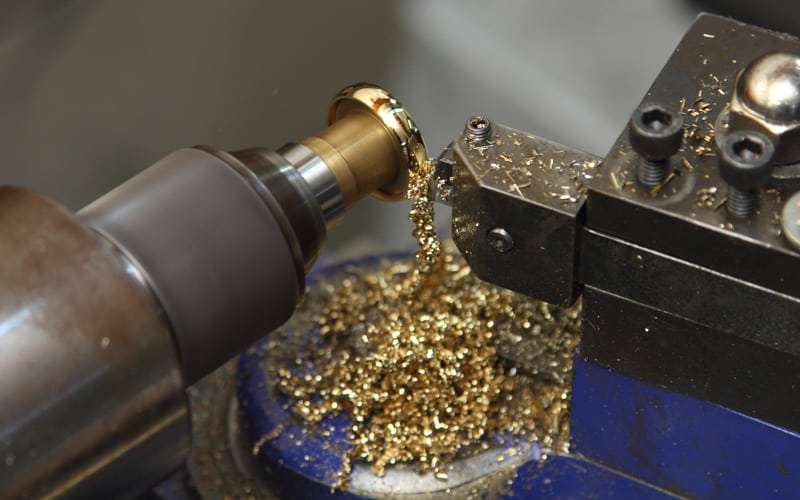
→ Return to Top
Wedding Ring Profiles
Love takes many shapes and so does our wedding bands.
What Is A Ring Profile?
There are several different profiles of wedding bands in which you can opt for. The profile refers to the shape of the interior and exterior of the band. It would be the shape you would see if the ring was viewed as a cross-section.
The courted shape tends to be our best seller as it is the most comfortable to wear but there are many styles to suit every taste.

Classic Court
Flat

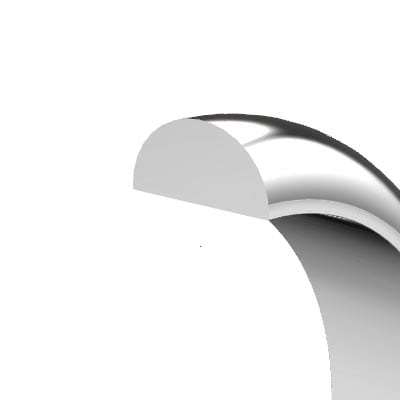
D- Shape
Flat court
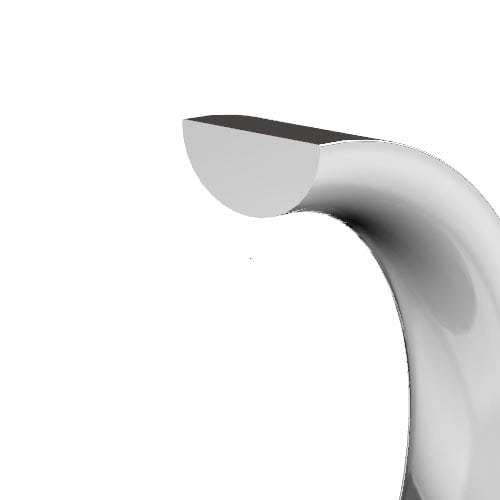
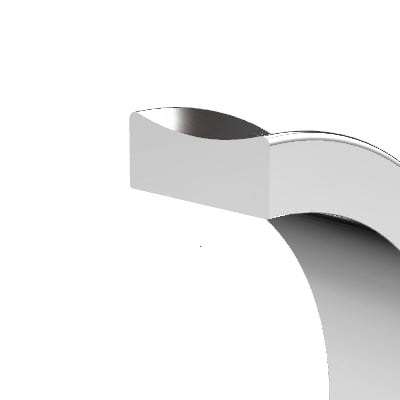
Concave
→ Return to Top
Engraving and Textures
What Is Engraving?
The tradition of inscribing or ‘engraving’ romantic poetry and decoration on to wedding bands began in the courts of medieval Europe in the early 1500’s. As one of the easiest ways to personalise your ring it is a great representation of your love and commitment for each other. Whether it be a meaningful phrase, song lyric or date engraving helps to commemorate special moments and significant information related to you as a couple.
As inscriptions are predominately done on the inside of the band you can inscribe a secret message which is only visible between yourself and your partner. It is a beautiful way to link both rings as a matching pair.
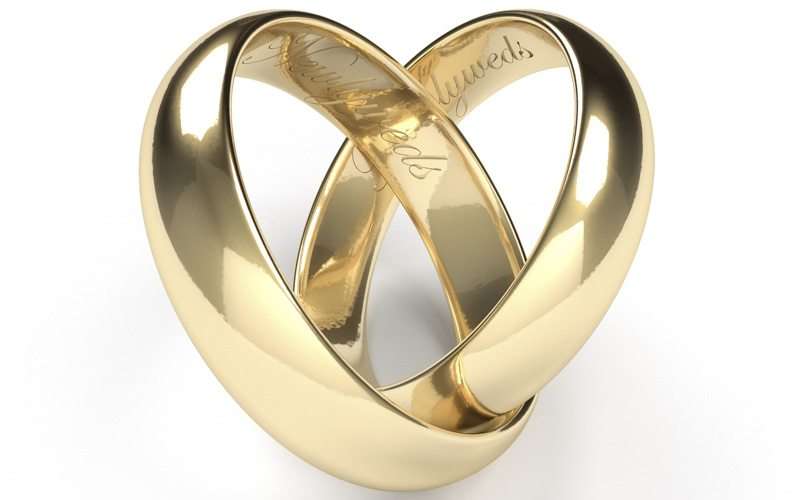
Design Details
The personalisation of a wedding band through decoration is a great way to create a more individual piece. It gives the ring definition and reflects your style and personality.
From the more refined details as mill grain edges to more intricate elements such as filigree and carved work it creates a big impact on the genre of your ring whether you are trying to create a more contemporary look or want to translate design elements from more antique and vintage styles.
Surface Textures

What Is A ‘Surface Texture’?
A subtle way to enhance the surface of a wedding band is to create a surface treatment which creates interest and texture. There are many variations in texture, each introducing their own unique appeal.
Satin and Brushed
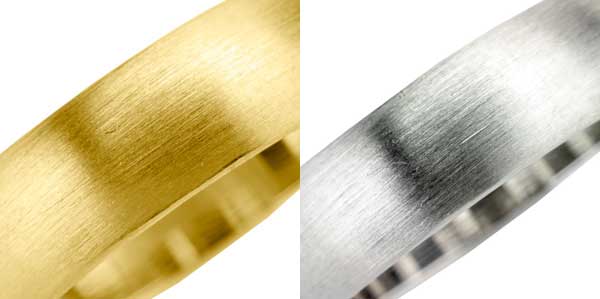
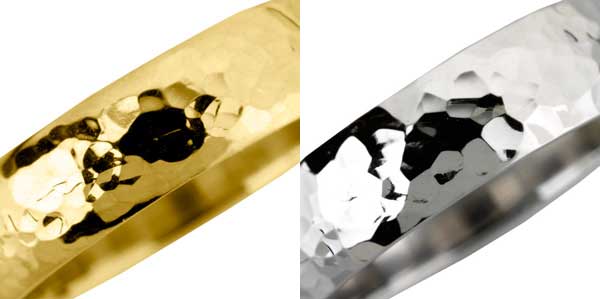
Hammered
Bead blasted
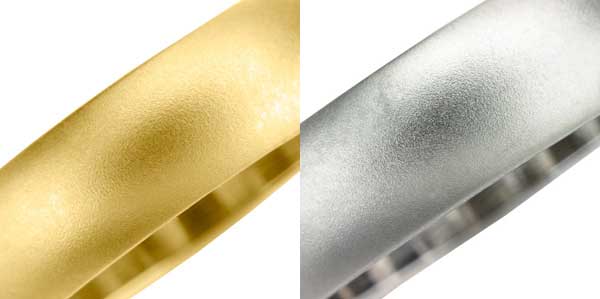

Ice
Florentine
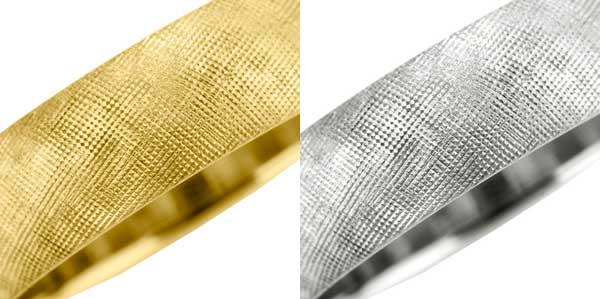
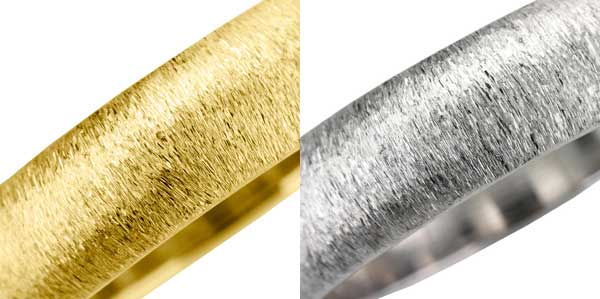
Stone
→ Return to Top
How We Make to Measure
How Do You Get a ‘Perfect Fit’ Wedding Band?
Finding a wedding band which aligns perfectly with your engagement ring is often a difficult task as many jewellers will not stock bands that fit flush to unique engagement rings. We aim to eliminate this problem by providing our clients with our ‘Perfect Fit Wedding Band Service’. There are two main ways of doing this through the use of a 3D scanner or hand shaping the band to create the perfect fit. The process in which we use for each ring is dependent on the complexity of the design to be made.
3D Scanning
We use a 3D scanner which produces a digital replica of the engagement ring. This then provides us with the exact measurements allowing us to tailor a wedding band to precise shapes and dimensions. We can then use our software to design a perfectly matching wedding band in line with our clients’ exact designs and vision.
The 3D scanner works by shining different patterns and intensities of light onto the object which is to be scanned. Specialist software is then used to analyze each measurement of the ring. The bright and shaded areas are projected on the ring in order to create an accurate 3D file.
Once a 3D image of your engagement is rendered a computer generated model of your wedding ring is designed. A Wax prototype of your wedding is then made. Final adjustments are then made by hand to ensure the perfect fit.
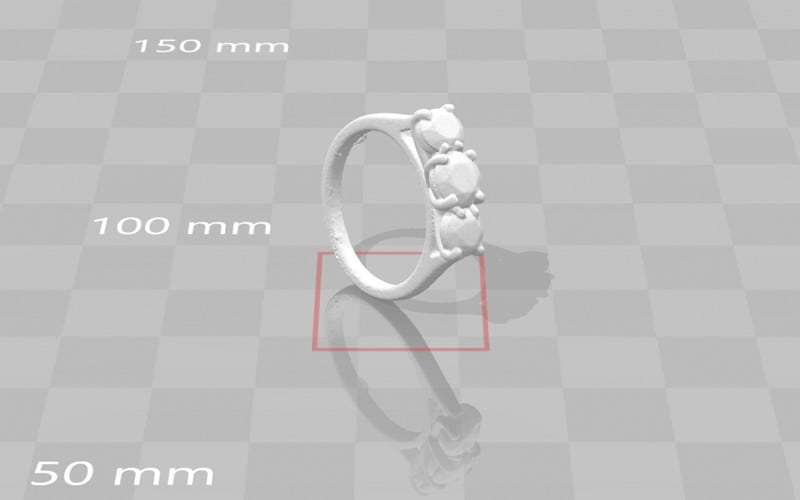
Hand Shaped Wedding Bands
Our skilled craftsmen also hand shape and contour wedding rings. This process is perfect for a more simple and refined profile. We use a solid band of your chosen precious metal and then hand shape it around the curves of your engagement ring. We can expertly match the profiles, widths and depths to your engagement ring to create the perfect matching companion. Whether you want your wedding band to fit a square, twist, halo, pear-shaped or other engagement ring design, your wedding ring can be cut, shaped and styled to ensure the best possible fit, into or around your engagement ring.
→ Return to Top
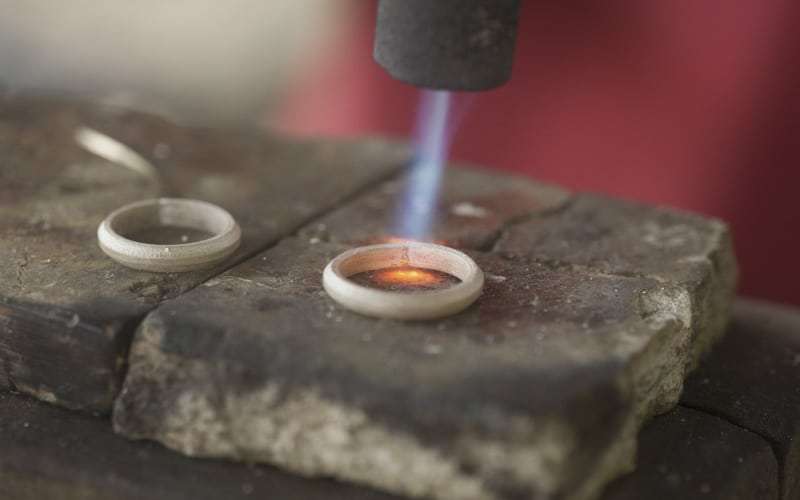
What Type Of Band Is Right For Me?

Contoured
As engagement rings have become increasingly intricate and embellished it makes it harder to find a wedding ring that fits comfortably alongside. Shaped wedding bands are essential in this instance to create a ring which compliments your engagement ring beautifully. If the center gem protrudes, or if there are natural curves in the engagement ring, the wedding ring will need to be contoured for a perfect match. A contoured wedding band, also called a shadow band, will have a slight curve to accommodate the engagement ring as necessary in order to sit flush. Please keep in mind however this is personal preference as we also find many women aren’t opposed the the small gap between the rings.
Straight
A straight band is designed to complement and sit next to the engagement ring. One advantage of a straight band is that it can be worn independently from the engagement ring. A straight band can fit flush against the engagement ring. However, if the engagement ring has a center setting that prevents the band from sitting flush, a gap can be seen between the ring and band.
→ Return to Top
Two Two and Inlays
What does Two Tone and Inlay Mean?
Inlaid or two-tone bands are an interesting way to have a contrasting colour of precious metals. Inlays can vary from a plating of metal through to a more solid inlay.
A two-tone band provides a subtle relief from the core metal used and can provide a beautiful splash of colour. It is a great way to personalise a band and an emelent of interest.
If you are contemplating a two-tone wedding ring it can become a distinct canvas upon which design engravings and patterns can resonate.

→ Return to Top
Wedding Band and Eternity Ring Setting Styles
The setting of stones into a wedding band is as historic and as traditional as the wedding band itself. Diamond and gem set wedding bands are a great way to add decoration and intricacy. There are many setting styles in which to enhance your wedding band with and each setting style provides their own advantages and unique look.









